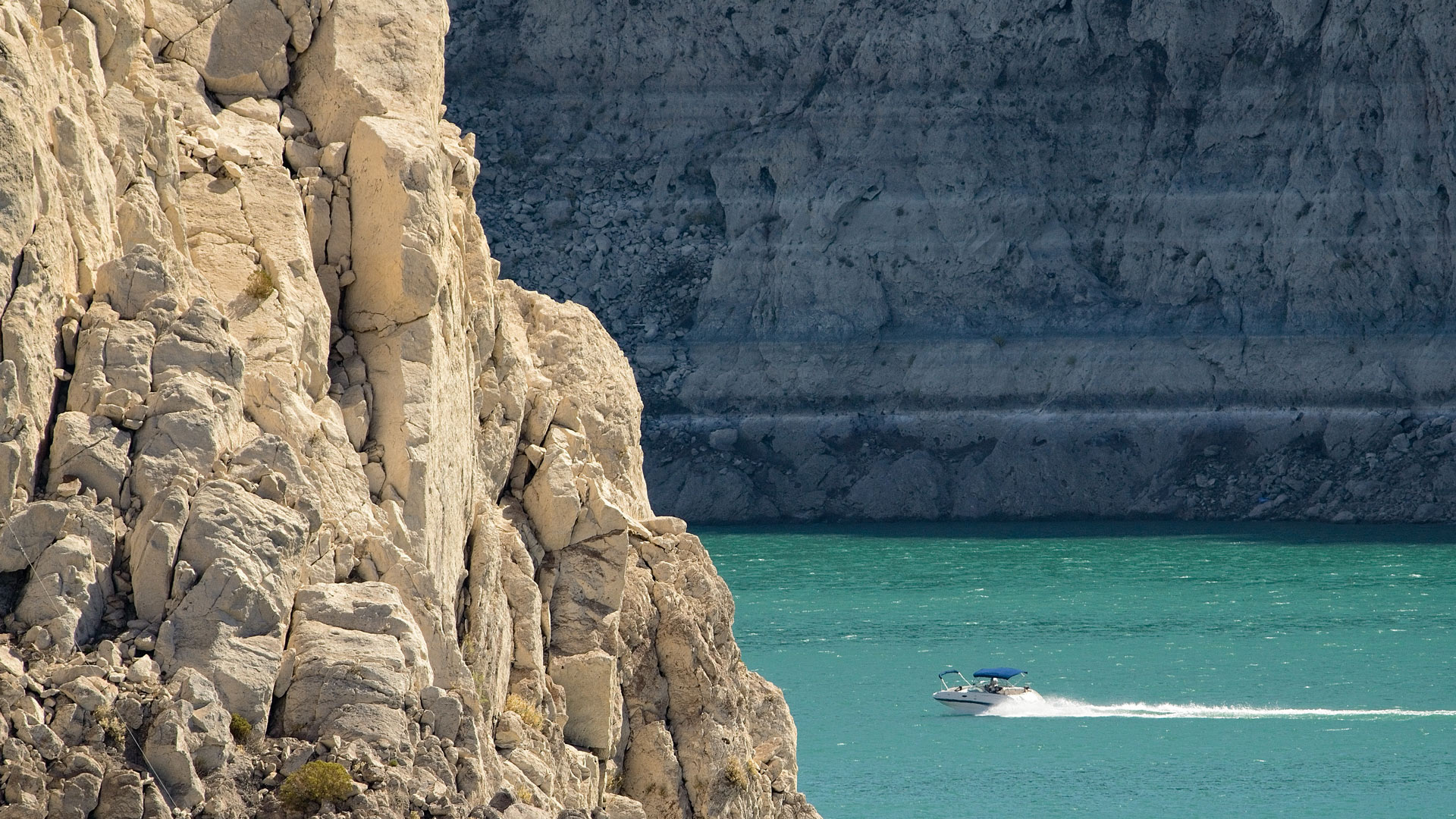 Lake Mead’s light-colored “bathtub ring” of mineral deposits towers above a speeding boat on June 29, 2022, near Hoover Dam.
Lake Mead’s light-colored “bathtub ring” of mineral deposits towers above a speeding boat on June 29, 2022, near Hoover Dam.
Federal officials aren’t ready to give states along the Colorado River a new deadline for water conservation goals.
The seven states that rely on the river blew past an August 16 deadline without a plan to conserve 2 to 4 million acre-feet of water. They were given that task by officials with the Bureau of Reclamation and from within the Interior Department. The agency’s models show that amount is what is necessary to keep the river’s biggest reservoirs -- Lakes Mead and Powell -- from reaching critical levels.
"Our common deadline is as soon as possible,” Tanya Trujillo, the Interior Department’s assistant secretary for water and science, said on Thursday. “While we're working on those shorter-term efforts, we're also at the same time trying to continue working on those longer-term strategies."
Federal officials announced they would be implementing a series of water cutbacks for Arizona, Nevada, and Mexico in 2023. Those cuts were previously agreed to under the 2019 Drought Contingency Plan and the 2007 Interim Guidelines.
In a statement, the Bureau of Reclamation said it would be considering “other operational actions to establish flexibility” in the river’s Upper Basin and Lower Basin operations at facilities the agency owns and operates, but didn’t elaborate further on what those actions might be.
“We want to encourage [the states] to be doing as much as possible,” Trujillo said. “There is an urgent requirement to be doing that. We’re trying to explain the modeling information that we have paints a very, very urgent situation. We feel the urgency. They should feel the urgency.”
Leading up to the deadline some water users and environmental groups had called on the federal government to go further than what is spelled out in current agreements. Some water users, including the Metropolitan Water District of Southern California, interpreted the Bureau of Reclamation’s announcement on Tuesday as a “limited extension” to the deadline to commit to conservation, though the agency hasn’t publicly stated a new deadline.
Bureau of Reclamation models show it’s possible for Lake Powell, the nation’s second-largest reservoir, to lose its ability to generate hydropower as early as December 2023.
“Upper Basin states need to be thinking about how to do more conservation,” Trujillo said. “Lower Basin folks, they have a track record that they’re building on, and they’re trying to increase their existing conservation.”
This story is part of ongoing coverage of the Colorado River, produced by KUNC and supported by the Walton Family Foundation.

By submitting your comments, you hereby give AZPM the right to post your comments and potentially use them in any other form of media operated by this institution.